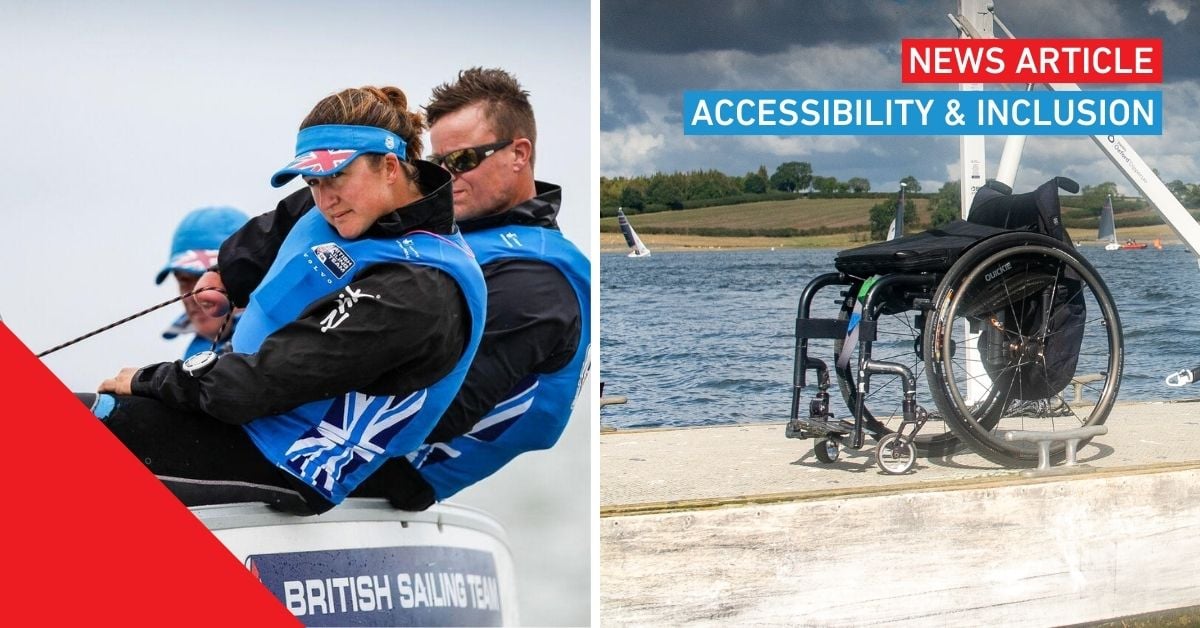Designing next generation propulsion
The Oceanvolt HighPower ServoProp 25 was named overall winner of the 2023 DAME Design Awards at METSTRADE. Kim Hollamby speaks with Oceanvolt’s Commercial Manager, Alec von Weissenberg, to learn how the company has iteratively improved its electric sail drive designs.
The 2023 DAME Design Awards entry list featured the highest number of electric propulsion products seen in the competition’s 32-year history and the nominated entries were judged to be of the highest average quality yet seen. As the Jury commented, to stand out as a zero-emission solution now requires a product that discernibly offers tangible design advantages over a growing array of peers – indicating the industry’s rapid change of focus.
Praise is therefore due to Oceanvolt for having taken not only a propulsion category win but then being named as the overall winner of this year’s DAME Design Awards. This follows a DAME propulsion category win for the Finnish electric sail drive manufacturer’s first ServoProp model back in 2017.
The heart of the DAME Awards ethos is encouraging marine equipment manufacturers to iteratively improve all design facets of their products. For Oceanvolt that has certainly been the strategy for its latest ServoProp model, as Commercial Manager Alec von Weissenberg confirms: “Back in 2017 our focus was on successfully proving the core concept of using an automatically controlled variable pitch propeller on an electric sail drive to enable it to work efficiently for hydrogeneration as well as propulsion. That model is still in production, but the only commonality between it and this latest addition is the concept and name.
“For the HighPower ServoProp 25 our mindset was to move from having a good core concept to having a product that was good in every way. As the DAME Awards showed this year the market is already becoming accustomed to electric propulsion with many new product entries. It isn’t enough to produce an electric motor with a drive. We wanted to provide fresh ideas, extra features and versatility for boat builders and users, enabling more choice over how they operate the system.
Motor design improvements
“Take the motor design, which is our own. Double windings are used to offer redundancy and we redesigned how the electric motor works, optimising it for displacement hulls. We also looked carefully at making it easier to control by integrating the motor controller and cooling system without separate boxes on the wall. We still need a manual to tell an engineer what the bolt torques should be but otherwise we think they won’t need to refer to it much as the installation process is simple.
“Cooling is an important element of electric motor design. You might assume that users will run their motors at around 50%-60% power, as they would with a diesel. But with no vibration or sound it’s hard to detect you are overstressing the motor and we know customers often use 90%-100% for periods of time which will lead to overheating issues if not anticipated. We’ve guarded against that by designing a fully integrated seawater fed cooling circuit that is oversized. Unlike IC engines you cannot overcool an electric motor; the cooler they run the better they perform.”
Although the HighPower ServoProp 25 is made for larger yachts, Oceanvolt has been able to stay within the safe voltage maximum of 48V DC for its power requirements. Serviceability is again a driver for this, avoiding the need for specialist technicians and high-voltage batteries when away from home.
Refining the sail drive
Several refinements have also been designed into the underwater elements of the ServoProp 25, as Alec explains: “On the original ServoProp design the servo motor that controls the propeller blades is in the hub, underwater, which involves running cabling up to the motor. It works well, but to reduce installation and service complications we decided to move it up to the top where it can be serviced while the yacht is in the water. The only thing we need electrically in the leg now is a small sensor cable.
“You can also change the oil in the leg with the boat afloat. The HighPower ServoProp 25 is designed for yachts of around 52ft-70ft so we wanted to minimise as much as possible the need for haul-outs as these can be costly and craneage is not always available away from base.
Back in 2017 our 15kW saildrive was originally designed to be installed with the prop facing forwards for more efficiency, but the market was sceptical and wanted traditional prop facing aft installations. Those perceptions are changing so the HighPower ServoProp 25 can be installed as a pusher or puller. If you opt for the prop facing forwards then you have higher efficiency, less cavitation and less noise.
“We’ve also re-engineered the motor and saildrive mount. Our early models used a two-part design which required the leg to be taken out if the motor was off. Now builders can install the motor and its cabling first, then attach the leg in the final phase, saving installation time. We also added a safety feature that if the leg is impacted heavily, it will snap off safely and preserve the hull integrity.”
Design effort
Alec confirms that is has taken two years of intensive effort by Oceanvolt’s research and development team to conceive and launch the ServoProp 25 and much of the product is original, not sourced: “When you try to push the electric propulsion market forward you must design and make components yourself as there is very little you can source off the shelf that is suitable. We did extensive research such as finite element analysis on structural strength of the leg, how it would break off in an accident and what pressure that would put on the rest of the system. We used computational fluid dynamics to refine the efficiency of the leg. Oceanvolt also has specialist engineers for the electrical and mechanical elements with deep insights on how to produce a dedicated motor for a specific application.
“Motor design is an area where the marine electric propulsion sector in general has more to learn – there are thousands of stock electric motors available originally designed for other uses, but many will not spin a propeller shaft efficiently. You can overcome issues around inefficient power delivery by over-specifying the power rating but then you have poor power consumption.”
Market potential
The DAME Jury’s commendation for the ServoProp 25 praised it for tangibly moving the goalposts for 45-70ft sailboats in terms of providing a reliable and extremely quiet option for electrification. Alec confirms the potential scope for selling electric saildrives is large and balanced across OEM and aftermarket opportunities: “Traditionally we’ve seen an approximate split of 50:50 between new builds and repowers now, although in recent times that was closer to 60:40 and aftermarket has slowed further this year. However, there is a massive legacy fleet that must be repowered at some point and that’s why we want to create products that any yard can install for customers. In the UK alone there is something like 22,000 yachts that fall within our current model range.
“The minds of boat owners are changing thanks to the automotive industry. Most buyers of new yachts costing say €1m or so will already own at least one electric car. Many of them would now ask why they must buy a new boat with a diesel when they want the same thing experience as their EV. The demand is there and now we need to work with boat builders to bridge the technical gap. Going pure electric on a 25-tonne boat that you want to be able to motor 15 hours straight is a massive undertaking at this stage. Having a DC generator as a range extender is an efficient compromise that, combined with a large battery bank, also greatly adds to comfort afloat.
“As an industry we are currently in a similar place to when Volkswagen launched the e-Golf in 2014 – an IC based familiar car platform that was adapted and worked. Now we are working towards being more like a Tesla and new developments will arrive very soon – which is necessary as consumers will vote with their wallets.”
Share your stories on leisure marine industry with us
Do you have an innovation, research results or an other interesting topic you would like to share with the leisure marine equipment industry? The METSTRADE website and social media channels are a great platform to showcase your stories! Let us know via metstrade@rai.nl
Are you a METSTRADE exhibitor?
Make sure you add your latest press releases to your Company Profile in the Exhibitor Portal for free exposure.





